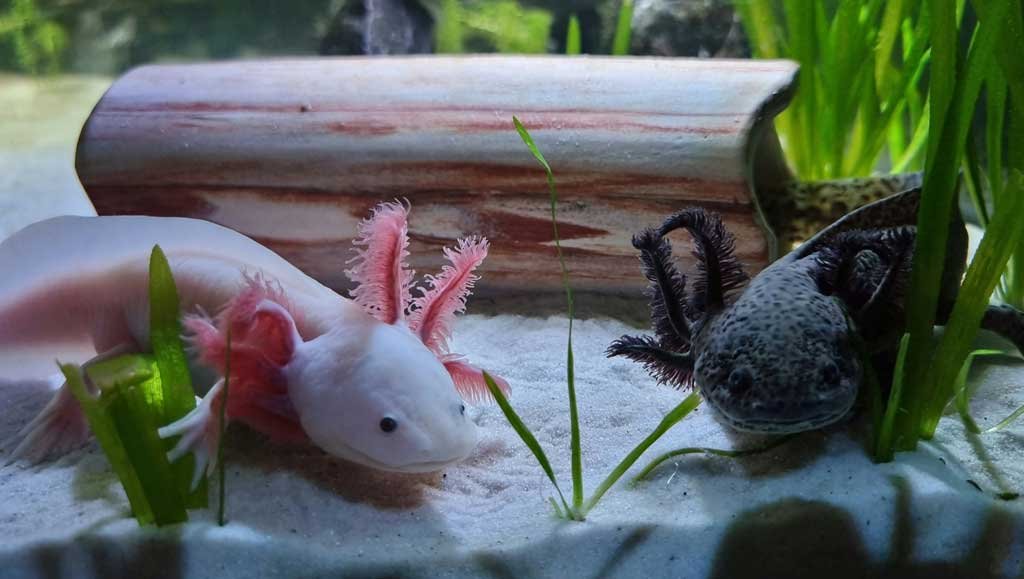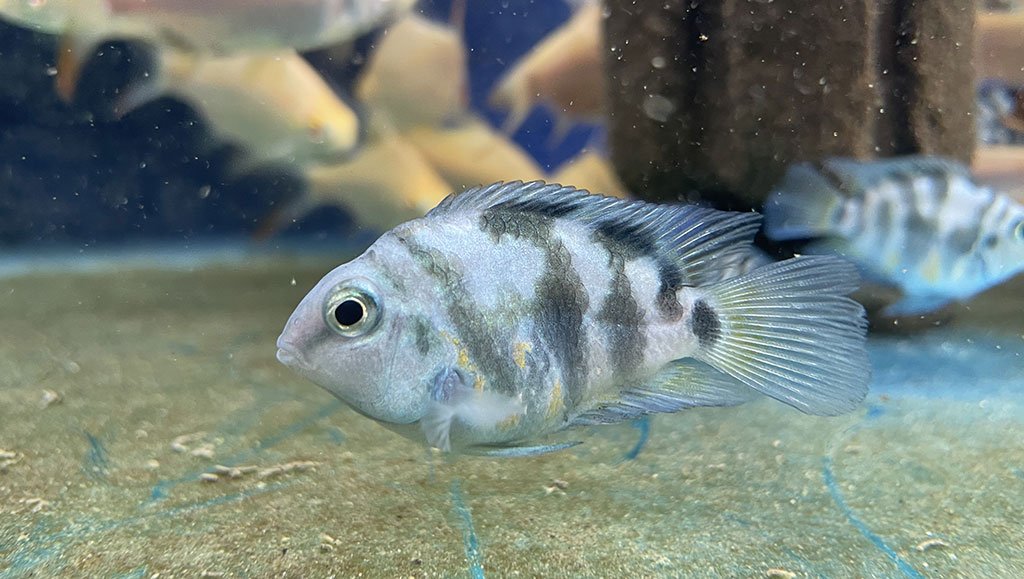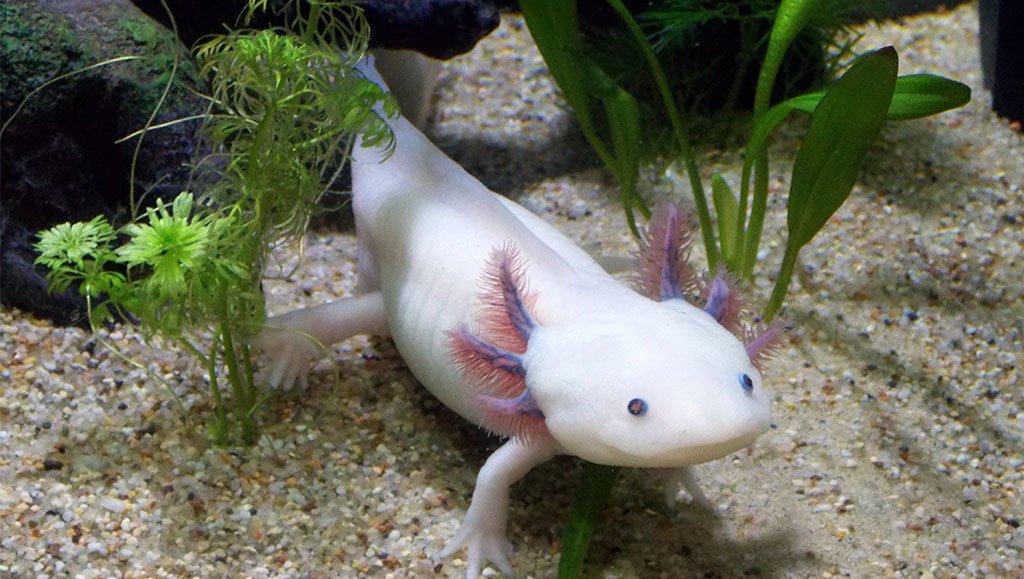Hello, fellow nature enthusiasts and curious minds! Welcome to an exhilarating dive into the fascinating world of wild type axolotls. If you’re as passionate about the mysteries of nature as I am, then you’re in for a real treat.
Throughout my years of exploring and studying these remarkable creatures, I’ve discovered so much more than I could have imagined. In this article, we’ll uncover the secrets of wild type axolotls together, learning about their natural habitats, unique physical characteristics, and their incredible regenerative abilities. You’ll also get a glimpse into the conservation efforts that are crucial for their survival.
Key Takeaways
In my adventure through the world of wild type axolotls, I’ve gathered some key insights that I am eager to share with you. If you’re on the brink of this fascinating journey or looking to deepen your understanding, here are my personal takeaways:
- Research is Your Best Friend: Before you even consider bringing a wild type axolotl into your home, make sure you’ve done your homework. Understanding their needs, behaviors, and environment is crucial for their well-being.
- Quarantine New Arrivals: Always, always quarantine new axolotls before introducing them to your established setup. This safeguarding step has been a game-changer for me, helping prevent the spread of diseases.
- Stress Reduction is Key: Creating a calm and stable environment for axolotls cannot be overstated. It’s been amazing to see how responsive these creatures are to their environment, showing more vibrancy and health when stressors are minimized.
- Breeding Requires Responsibility: Breeding wild type axolotls has been one of the most rewarding experiences for me, but it demands a serious commitment. Understanding the responsibility towards both the adults and the offspring ensures a successful and ethical breeding process.
- Genetic Diversity Matters: I cannot stress enough the importance of genetic diversity for the health of your axolotls and their fry. This insight has guided me towards more responsible breeding practices and healthier axolotls.
- Planning for Offspring is Essential: If you decide to breed, having a plan for the offspring is essential. This foresight has not only been an ethical imperative for me but also a practical one, ensuring that all juveniles find suitable homes.
Description and Appearance of Wild Type Axolotls
Ah, the wild type axolotls! Imagine stepping into the lush, underwater gardens of Mexico’s lakes and encountering these extraordinary creatures. Their appearance is nothing short of magical, and getting up close, you’ll notice the incredible details that make them stand out in the animal kingdom. Allow me to paint a picture of these beauties from my adventures and studies.
A. Natural Coloration and Patterns
The wild type axolotls are adorned with a spectacular mosaic of earthy hues that blend seamlessly with their natural habitat. Their skin, a canvas of greens, browns, and blacks, is speckled with gold flecks, capturing the essence of the watery world they thrive in. This mottled pattern isn’t just for show; it’s a masterclass in camouflage, allowing them to become one with the murky depths of their environments. Witnessing one suddenly appear from the shadows is like watching nature’s own magic trick.
B. Physical Features: Gills, Limbs, and Body Shape
One of the most mesmerizing aspects of axolotls that never fails to fascinate me is their flamboyant gills. These external, feathery appendages, radiating from their heads, range in color from vibrant reds to soft pinks, pulsating with life as they filter the water. The contrast of their sleek, elongated bodies adorned with these delicate, yet functional ornaments is a sight to behold. They possess sturdy limbs, equipped for navigating their aquatic realm, and a streamlined body shape, perfected for a life suspended in liquid tranquility.
C. Variations and Subtypes Within the Wild Type Category
While the ‘wild type’ is a term used to describe their natural, unaltered genetics, it’s fascinating to observe the subtle nuances and variations among them. Some possess darker, more pronounced markings, while others flaunt a lighter, almost mystical veil of color. Each axolotl, a testament to the diverse tapestry of nature’s designs, is uniquely beautiful. These variations, while subtle, reveal the incredible adaptability and diversity within their species, a reminder of nature’s complexity and elegance.
D. Eyes and Vision
Diving deeper into their features, the eyes of wild type axolotls are captivating spheres that seem to hold the mysteries of aquatic life. Their vision, adapted to the dimly lit waters of their habitats, allows them to be keen observers of their surroundings. The way their eyes glitter under the surface, scanning for food or perceiving potential threats, adds to their mystique, making them not just survivors, but warriors of the deep.
E. Tail and Its Functions
And then, there’s the tail – an extension of their body that speaks volumes about their agility and grace. Watching an axolotl propel itself with gentle undulations of its finned tail is witnessing a ballet underwater. This tail serves multiple purposes – it’s an instrument of movement, a tool for balance, and in times of need, a reservoir for regrowth.
Habitat and Natural History of Wild Type Axolotls

Source: @axolotlsent
Journey with me now, as we plunge into the heart of Mexico, to discover the enchanting habitat and deep history of the wild type axolotls. Their story is not just one of survival, but of adaptation, interaction, and the ongoing battle for conservation.
A. Native Range: Lakes and Waterways of Mexico
The wild axolotls call the network of lakes and waterways around Mexico City their home, particularly the remaining canals of Xochimilco. This intricate aquatic system, rich in history and biodiversity, forms the perfect backdrop for the life of these unique creatures. Through my explorations, navigating the maze-like waters of Xochimilco was like stepping back in time, witnessing a habitat that has nurtured axolotls for centuries.
B. Ecological Role and Adaptations to Aquatic Environments
Amidst the flowing channels and lush vegetation, axolotls play a vital ecological role as both predator and prey. Their adaptations to this dynamic environment are nothing short of remarkable. From their ability to regenerate lost body parts to their specialized hunting techniques using suction, every aspect of their being is tailored to thrive underwater. Observing them in their natural setting, it’s clear how each behaviour and physical trait has been shaped by the demands of their habitat.
C. Threats and Conservation Status of Wild Axolotl Populations
However, not all is tranquil in the waters of Xochimilco. The axolotl faces daunting threats! Urbanization, pollution, and invasive species have wreaked havoc on their numbers, leading to a dramatic decline. Classified as Critically Endangered, the struggle for their survival is palpable. During my journeys, the conversations I’ve had with local conservationists highlighted the urgent need for action – not just for axolotls but for the entire ecosystem they inhabit.
D. Unique Behavioral Traits and Feeding Habits
Diving deeper into their world, we uncover unique behavioral traits that set axolotls apart. Their nocturnal feeding habits showcase their adaptability – stealthily navigating the murky waters at night to prey on worms, small fish, and even other axolotls. Observing these behaviors first hand, under the moon’s glow, was like being privy to a secret underwater realm.
E. The Importance of Freshwater Conservation Efforts
This venture into the heart of the axolotl’s world brings us face to face with the chief lesson of our times – the critical importance of freshwater conservation. The survival of axolotls and countless other species hinges on our ability to protect and restore their natural habitats. Supporting conservation efforts in Xochimilco and beyond isn’t just an act of saving axolotls; it’s a commitment to preserving the intricate web of life that freshwater ecosystems support.
Housing Requirements for Wild Type Axolotls
Stepping into the world of axolotl care, it’s crucial to mimic their natural habitat as closely as possible to ensure their health and happiness. Drawing from my personal experiences, I’ll guide you through setting up the perfect environment for your wild type axolotls.
A. Tank Size and Setup Recommendations
First off, space is key! I recommend starting with a tank size of at least 20 gallons for a single axolotl, with an additional 10 gallons for each new friend added. This provides ample room for them to explore without feeling cramped. My setup includes plenty of hiding spots with plants (real or silk to avoid injuries) and soft, fine substrate to protect their delicate limbs. Remember, avoid gravel; axolotls can mistakenly ingest it, leading to health issues.
B. Water Parameters: Temperature, pH, and Water Hardness
Getting the water parameters right is essential. Aim for a temperature range between 60-64°F (15-18°C). Too warm and your axolotls could become stressed, too cold and their metabolism might slow down too much. The ideal pH level is around 7.4-7.6, with water hardness between 7-14 dGH. Consistency is key, so I make it a habit to check these parameters weekly with a reliable test kit.
C. Filtration and Water Quality Maintenance in Axolotl Tanks
A gentle but efficient filtration system is crucial to maintain water quality without creating harsh currents. I personally use sponge filters for my axolotl tanks; they’re affordable and effective. Weekly water changes of about 15-20% have proven to be effective in keeping the water clean and the axolotls happy. It’s all about maintaining a balance that mimics their natural, flowing waters as closely as possible.
D. Diet and Nutrition
Feeding your axolotls a well-balanced diet is crucial for their health. In my experience, a variety of foods such as bloodworms, earthworms, and tailor-made axolotl pellets ensure they receive all the necessary nutrients. It’s fascinating to watch their hunting technique – a swift gulp and the food is gone! Feeding them late in the day to align with their nocturnal nature has always yielded the best results for me.
E. Social Interactions and Tank Mates
While axolotls can coexist with others of their kind, it’s important to monitor their interactions closely. They are known to nip at each other’s gills or limbs, particularly in smaller tanks or when food is scarce. I’ve found that keeping them with similar-sized tank mates and ensuring plenty of food can minimize aggression. However, always be prepared to separate them if necessary to avoid injuries.
Feeding and Diet for Wild Type Axolotls
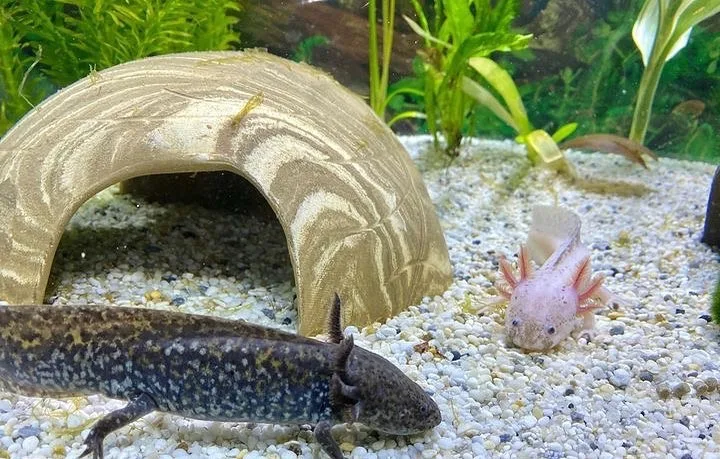
Source: @axolotlworn
Feeding your axolotl correctly is a crucial part of their care that keeps them thriving. Based on my experience and extensive research, here’s what I’ve learned:
A. Natural Diet in the Wild: Insects, Worms, and Small Fish
In their natural habitat in Xochimilco, axolotls are opportunistic predators, feeding on a variety of live prey. This includes small insects, worms, and even small fish. The thrill of the hunt is in their blood, and their diet in the wild offers them a broad spectrum of nutrients. This diverse menu helps in replicating a similar nutritional profile for them in captivity, offering insights into their dietary needs and preferences.
B. Suitable Foods in Captivity: Live, Frozen, and Pelleted Options
In captivity, providing a diet that mimics their natural intake as closely as possible ensures your axolotls remain healthy and vigorous. From my experience, live foods like earthworms and feeder fish can invigorate their natural hunting instincts, providing mental and physical stimulation. Frozen options, such as bloodworms and brine shrimp, are also great, especially when live food isn’t feasible. High-quality pelleted foods designed for axolotls can provide a balanced diet and are excellent for daily feeding. It’s amazing to watch them eat; each axolotl seems to have its own preference and feeding style!
C. Feeding Frequency and Portion Sizes for Wild Type Axolotls
Young axolotls (juveniles) have a high metabolism and require daily feeding. However, as they grow older, the frequency can be reduced. Adult axolotls thrive on being fed two to three times a week. Portion size is paramount – I ensure each feeding amount is roughly the size of my axolotl’s head, preventing obesity while ensuring they’re satiated. Observing their behavior helps in adjusting portion sizes and frequency to meet their individual needs.
D. Monitoring Health and Nutrition
It’s essential to keep an eye on your axolotl’s health and adjust their diet accordingly. A well-fed axolotl should have a slightly rounded belly, but beware of overfeeding, as obesity can become a real health issue. Watch for signs of nutritional deficiencies or health problems, such as lethargy or a lack of appetite, and be prepared to consult with a vet experienced with amphibians if you’re concerned.
E. Tips for a Healthy Axolotl Diet
Through my years of caring for axolotls, I’ve gathered some practical tips. Variety is the spice of life – incorporating a mix of live, frozen, and pelleted foods not only keeps meals interesting for your axolotl but ensures a well-rounded intake of nutrients. Also, remember to remove uneaten food to prevent water quality issues. Sharing these experiences, I hope to inspire and guide fellow enthusiasts in providing the best care for these fascinating creatures.
Tankmates and Compatibility
When setting up a community tank that includes our unique and fascinating wild type axolotls, choosing the right tankmates and ensuring compatibility is key to a harmonious aquarium. From my personal experience, here’s a comprehensive look at making this communal living a success.
A. Suitable Tankmates for Wild Type Axolotls
Finding suitable tankmates for axolotls can be quite the challenge, primarily due to their unique requirements and temperament. In my years of caring for axolotls, I’ve learned that snails and certain types of shrimp can coexist peacefully with them. These creatures tend to keep to themselves and are great at cleaning up any leftover food without bothering the axolotls. However, it’s important to research and ensure that any chosen tankmate can thrive in the same water conditions as your axolotls.
B. Compatibility with Other Axolotl Varieties and Fish Species
In terms of compatibility with other axolotl varieties, it’s generally safe to house different morphs together, provided there’s enough space and resources for each individual. However, caution must be exercised when considering fish as tankmates. Many fish species tend to nibble on the delicate gills of axolotls, which can cause stress or injury. Therefore, I generally advise against mixing axolotls with fish, especially those known for their fin-nipping behavior.
C. Avoiding Aggression and Ensuring Peaceful Coexistence in Community Tanks
To ensure peaceful coexistence in a community tank, it’s crucial to monitor interactions closely, especially in the initial stages. Providing ample hiding spots and enough space can significantly reduce the risk of aggression. If you notice any signs of aggression or stress, such as frantic swimming or hiding more than usual, it might be time to rethink your tank setup or separate incompatible species.
D. The Role of Environmental Enrichment
From my experience, environmental enrichment plays a significant role in reducing stress and aggression in community tanks. Structures like caves, plants, and other hiding spots not only mimic the axolotl’s natural habitat but also provide refuge and territories for tankmates. This setup encourages natural behavior and reduces competition, creating a more harmonious living environment.
E. Monitoring and Intervention
Regular monitoring is essential to maintaining harmony within a community tank. Pay attention to the behavior and condition of your axolotls and their tankmates. If you observe any signs of stress, injury, or illness, immediate intervention may be necessary, which could include adjusting the environment or, in some cases, separating incompatible species.
F. Conclusion
Creating a peaceful community tank with axolotls involves careful planning, patience, and ongoing observation. While the options for compatible tankmates are limited, it’s possible to achieve a balanced ecosystem where axolotls and their companions thrive. By paying close attention to the needs and behaviors of each inhabitant and making adjustments as needed, you can enjoy the dynamic and engaging environment of a multi-species tank.
Health and Disease Management
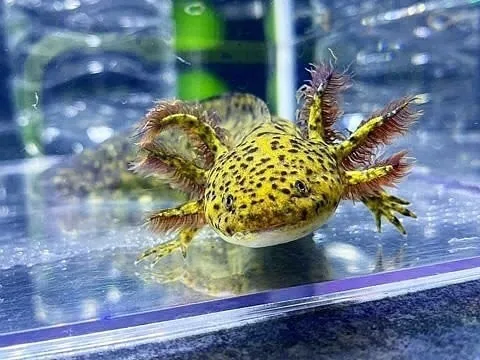
Source: @axolotlwept
Taking care of axolotls not only brings joy and fascination into our lives but also a responsibility to maintain their health and well-being. Over the years, I’ve encountered various health concerns with my axolotls and learned how critical proactive management and swift action can be. Here’s what I have discovered about keeping our aquatic friends thriving.
A. Common Health Issues in Axolotls
From my experience, axolotls can face a range of health issues, but some of the most common include fungal infections, which often present as fluffy white growths on the body or gills; bacterial infections, leading to redness or swelling; and physical injuries from aggressive tankmates or rough handling. Another issue to watch for is impaction, which can occur if axolotls ingest substrate or other indigestible materials.
B. Preventive Measures: Water Quality, Diet, and Habitat Conditions
Prevention is key to avoiding many health problems in axolotls. I’ve found that maintaining pristine water quality with regular testing and changes, providing a balanced diet suited for their nutritional needs, and ensuring their habitat conditions mimic their natural environment as closely as possible are pivotal steps. A suitable filter, temperature control, and avoiding sharp or small objects they could swallow have also been indispensable in my axolotl care routine.
C. Recognizing Signs of Illness and Seeking Veterinary Care When Necessary
Learning to recognize the early signs of illness in axolotls has been crucial. Symptoms may include lethargy, loss of appetite, discoloration, unusual floating or sinking, and abnormalities in the skin or gills. At the first sign of such issues, consulting with a veterinarian who specializes in amphibians is essential. It’s better to be overly cautious than to regret inaction later.
D. The Importance of Quarantine for New Arrivals
Introducing new axolotls to your established community can be exciting, but it also comes with risks. Quarantine is a practice I cannot recommend enough. Keeping new arrivals in a separate tank for at least 30 days allows you to observe them for any signs of illness without risking the health of your current axolotls. This period is also ideal for slowly acclimating them to the water parameters they will find in their new home.
E. Stress Reduction Techniques
Stress can exacerbate health problems or make axolotls more susceptible to diseases. Creating a stress-free environment involves more than just proper tank setup. It includes minimizing loud noises or vibrations near the tank, handling them as little as possible, and providing plenty of hiding places. Understanding the signs of stress in axolotls, such as frequent hiding or gill flicking, has been essential for me to adjust their environment as needed.
Breeding and Reproduction
Breeding axolotls has been one of the most rewarding aspects of keeping these fascinating creatures, offering a unique glimpse into the cycle of life and the genetic marvels of this species. Here’s a breakdown of my experience with axolotl reproduction and how you can successfully breed and raise these enchanting amphibians.
A. Overview of Axolotl Reproductive Behavior
Axolotls reach sexual maturity at about 18 to 24 months of age, though this can vary depending on their environment and genetics. Males and females exhibit distinct behaviors when ready to breed. Males perform a mating dance around the female, depositing spermatophores (packets of sperm) on the tank bottom. The female then picks these up with her cloaca to fertilize her eggs. Observing this delicate courtship and subsequent egg-laying is truly a sight to behold.
B. Breeding Setup and Conditions for Wild Type Axolotls
For breeding wild-type axolotls, I’ve found it’s essential to mimic their natural conditions as closely as possible. This means setting up a separate breeding tank with cooler water temperatures (about 60-64°F) to stimulate the breeding season that naturally occurs in winter. The tank should be equipped with plenty of hiding spots and a substrate conducive to the deposition of spermatophores. Gentle filtration and consistent water quality are paramount to encourage breeding behavior and ensure the health of both adults and the upcoming offspring.
C. Rearing Fry and Caring for Offspring in Captivity
Raising axolotl fry has been both challenging and immensely fulfilling. Once the eggs hatch, the larvae are incredibly delicate and require meticulous care. I start with infusoria and then transition to baby brine shrimp as they grow. It’s critical to maintain clean water, performing daily partial water changes to keep ammonia levels in check. Separating the fry based on size can prevent cannibalism, a common occurrence in growing axolotls.
D. Genetic Diversity and Responsible Breeding Practices
Ensuring genetic diversity is crucial for the health and vitality of captive axolotl populations. I always recommend breeding axolotls that come from diverse genetic backgrounds to prevent health issues and deformities associated with inbreeding. Keeping detailed records of lineage and genetics helps in making informed breeding decisions and contributes to the overall well-being of the species in captivity.
E. Ethical Considerations and Planning for Offspring
Breeding axolotls should not be undertaken lightly. It’s important to consider the ethical implications, including the commitment to care for potentially hundreds of offspring. Before breeding, it’s essential to have a plan for the rehoming of juveniles, ensuring they go to knowledgeable and capable owners. This responsibility has taught me a great deal about ethical breeding and the dedication required to sustain the wellbeing of these incredible creatures.
My Opinion on Wild Type Axolotls
In my years of caring for and breeding wild type axolotls, I’ve come to deeply appreciate these captivating creatures for their uniqueness and the sheer joy they bring into my life. From my experience, wild type axolotls are not just pets; they are a window into the marvels of nature and a constant source of fascination. Their care requires dedication, patience, and a willingness to learn, but the rewards are immeasurable. Watching them glide through the water with grace, observing their quirky behaviors, and even the challenge of breeding them has enriched my understanding of aquatic life.
To those considering entering the wonderful world of axolotl care, my advice is simple: do your research, commit fully, and remember that these creatures depend on you for their well-being. The responsibility is great, but so too is the reward. Wild type axolotls, with their distinct looks and personalities, have taught me more about empathy, science, and the importance of conservation than I could have imagined. If you’re passionate about keeping these extraordinary amphibians, prepare for an incredibly rewarding journey.
